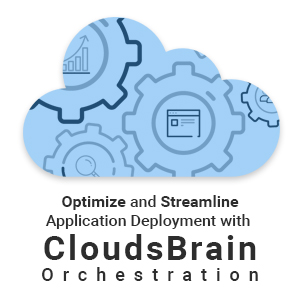


With the fast-paced IT interventions, most of the organizations tend to reduce redundant operations and streamline the workloads. That’s where orchestration comes to go a step ahead than automation for optimizing redundancies.
Orchestration refers to the automated management and coordination of computing application and services that result in a consolidated workflow. It eliminates repetitive tasks and supports faster deployments in different cloud infrastructures.
Orchestration is important for delivering dynamically scalable smart applications and cloud resources which reduces human errors and improves productivity.
A scalable strategy is needed to manage multiple automated systems and their configurations for different business environment. It becomes a complex task to manage such interconnected systems altogether manually with increased risks of human errors.
The aim of orchestration is to co-ordinate, optimize and streamline repeated processes and workarounds to provide accurate and speedy application deployment. It can also be used to automate various IT operations such as database management, cloud and application orchestration, server provisioning, incident management and many more tasks.
Clouds Brain Orchestration: -
Fig 1: Clouds Brain Orchestration
Above figure shows that a smart orchestration module has been integrated with Clouds Brain to simplify cloud resource management and automate cloud resources which a user can create, delete or modify by using a simple JSON template. Clouds Brain orchestration template is a text file in JSON format which can be compiled directly by the user. With this JSON template, user can create and configure their resources for automatic deployment, maintenance and operations.
Clouds Brain orchestration manage the interconnection and interaction amongst workloads on public and private clouds. It provides high availability, scalability, disaster recovery, and numerous other tasks into a single module that can effectively reduce team efforts. Precisely, its real-time user scenarios are explained below:
Fig 2: Clouds Brain Orchestration Scenarios
An individual can leverage all these features by creating their templates on Clouds Brain orchestration module as follows:
1. Create a new template in orchestration module and fill in the required details.
2. Check the predefined template to select from already existing ones.
3. You can check the JSON and other parameters as per your requirement.
4. Validate all the inputs and proceed to create the template.
5. You can see your newly created template on orchestration dashboard with its characteristics.
Enterprises face a lot of issues while creating huge infrastructures with a complicated script at runtime. Also, it is time-consuming to build resources through the console for balancing their heavy workload. Clouds Brain has bundled all the complexities into an easy and consolidated orchestration UI. Organizations can create and manage their cloud resources easily, with the help of readily available predefined terraform template. All you need to do is just fill in your required resource configuration and validate it and the resource is created automatically at runtime in your infrastructure without any human interventions. Hence it saves time and reduces manual errors.
Conclusion!
Clouds Brain orchestration feature offers organizations with effective visibility and control of their middle-wear, applications and services for complex compute services, simplified deployment, smart automation plans, cost savings and easy optimization. Hence one should opt for Clouds Brain Orchestration module to standardize their templates and resource management. Visit us @Click2Cloud.com for more details on our product and cloud computing services.